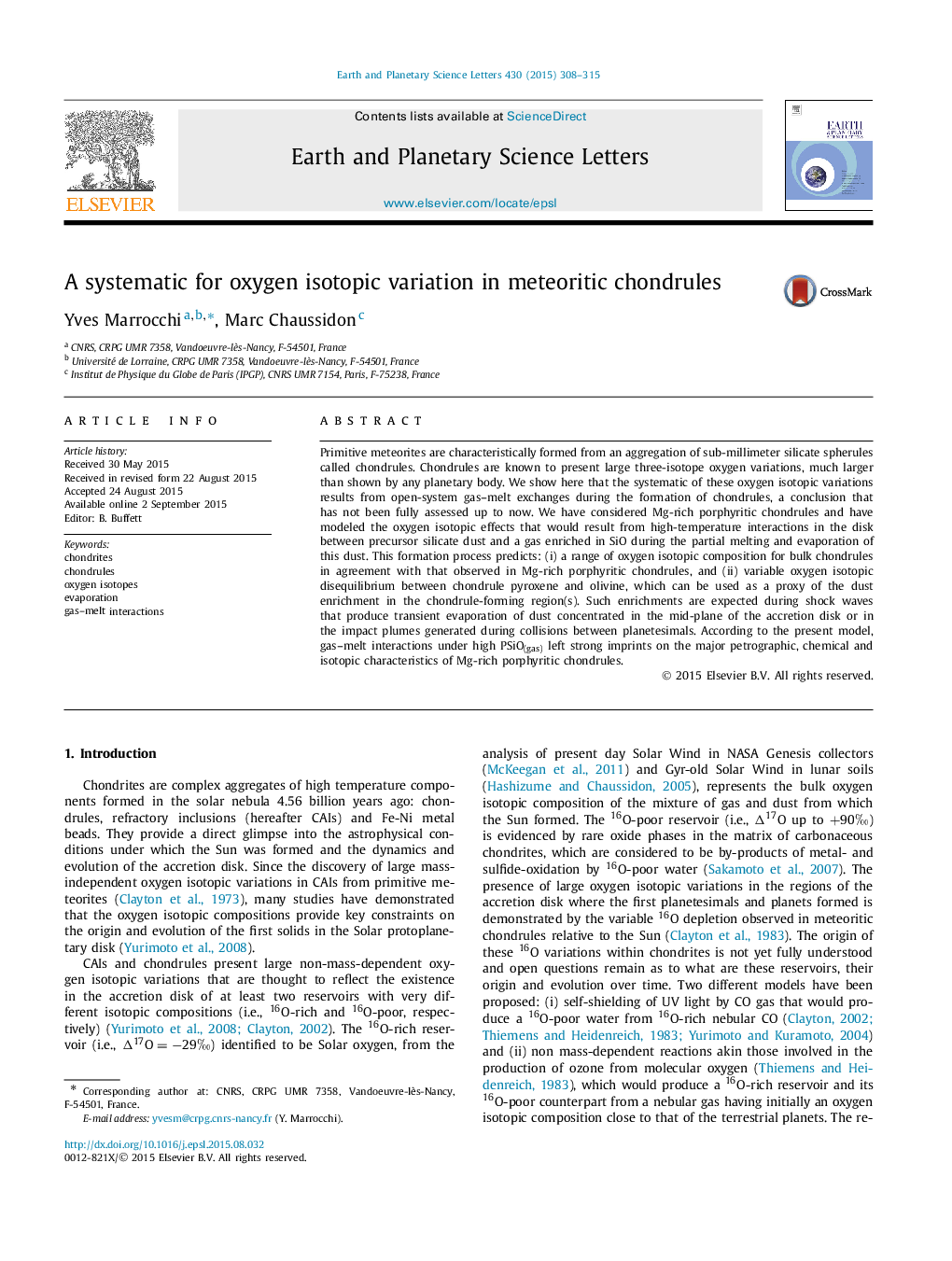| Article ID | Journal | Published Year | Pages | File Type |
|---|---|---|---|---|
| 6427946 | Earth and Planetary Science Letters | 2015 | 8 Pages |
â¢A model of evaporation-driven gas-melt interactions during chondrule formation is proposed.â¢We examine the implications on generating oxygen isotopic compositions of chondrules.â¢We show that dust evaporation is a key mechanism for generating the chondrule characteristics.â¢Evaporation-driven gas-melt interactions control the oxygen isotopic compositions of chondrules.â¢Oxygen isotopic disequilibrium between pyroxene and olivine is a proxy of the dust enrichment.
Primitive meteorites are characteristically formed from an aggregation of sub-millimeter silicate spherules called chondrules. Chondrules are known to present large three-isotope oxygen variations, much larger than shown by any planetary body. We show here that the systematic of these oxygen isotopic variations results from open-system gas-melt exchanges during the formation of chondrules, a conclusion that has not been fully assessed up to now. We have considered Mg-rich porphyritic chondrules and have modeled the oxygen isotopic effects that would result from high-temperature interactions in the disk between precursor silicate dust and a gas enriched in SiO during the partial melting and evaporation of this dust. This formation process predicts: (i) a range of oxygen isotopic composition for bulk chondrules in agreement with that observed in Mg-rich porphyritic chondrules, and (ii) variable oxygen isotopic disequilibrium between chondrule pyroxene and olivine, which can be used as a proxy of the dust enrichment in the chondrule-forming region(s). Such enrichments are expected during shock waves that produce transient evaporation of dust concentrated in the mid-plane of the accretion disk or in the impact plumes generated during collisions between planetesimals. According to the present model, gas-melt interactions under high PSiO(gas) left strong imprints on the major petrographic, chemical and isotopic characteristics of Mg-rich porphyritic chondrules.
